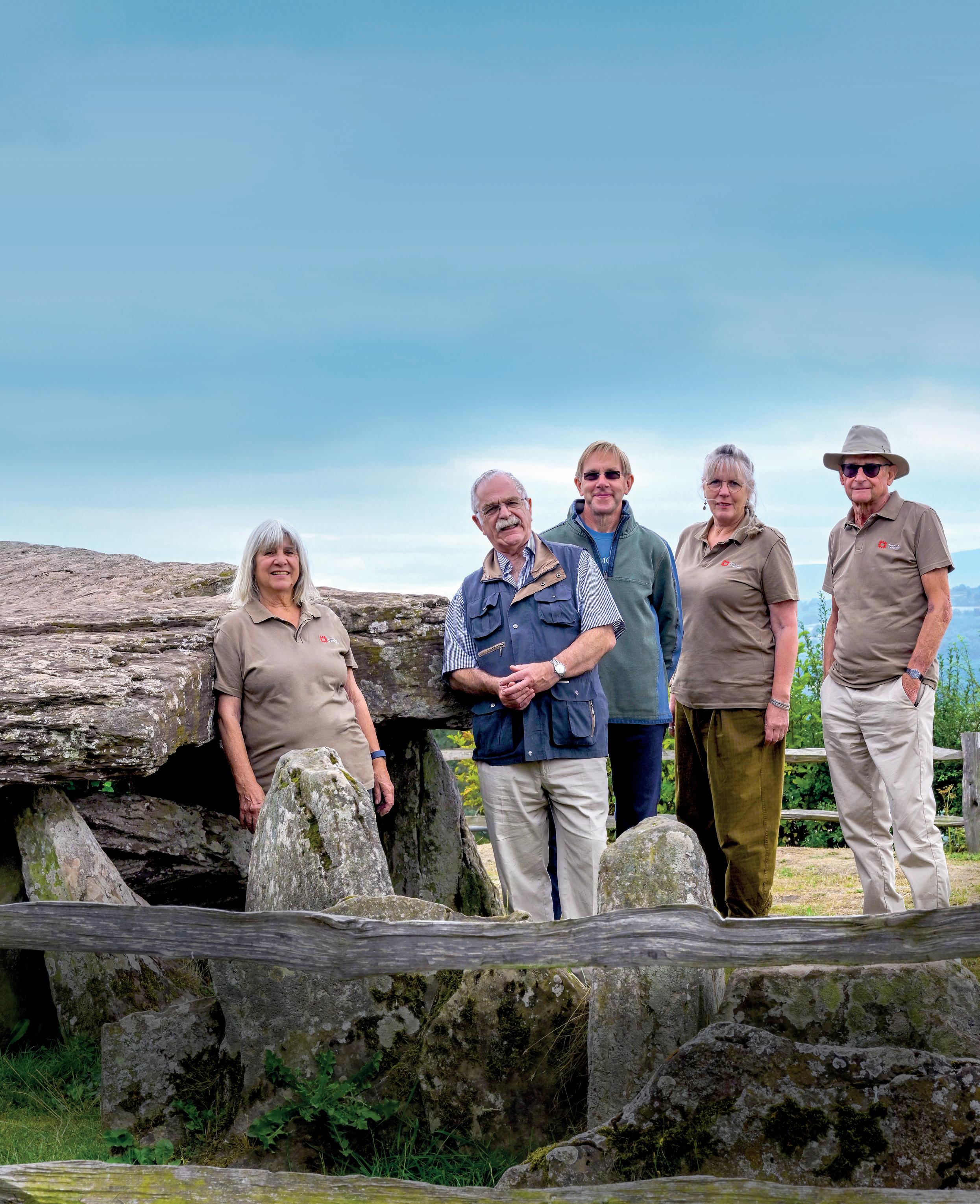
INSIDE: Project profile | Need to know | We did it! | Charity update and more... Discovering Arthur’s Stone Volunteers help uncover insights into this ancient tomb CREATURES GREAT AND SMALL Meet the animals cared for by our volunteers VOLUNTEER FOCUS 2022 ISSUE 21 Together we’re making a difference
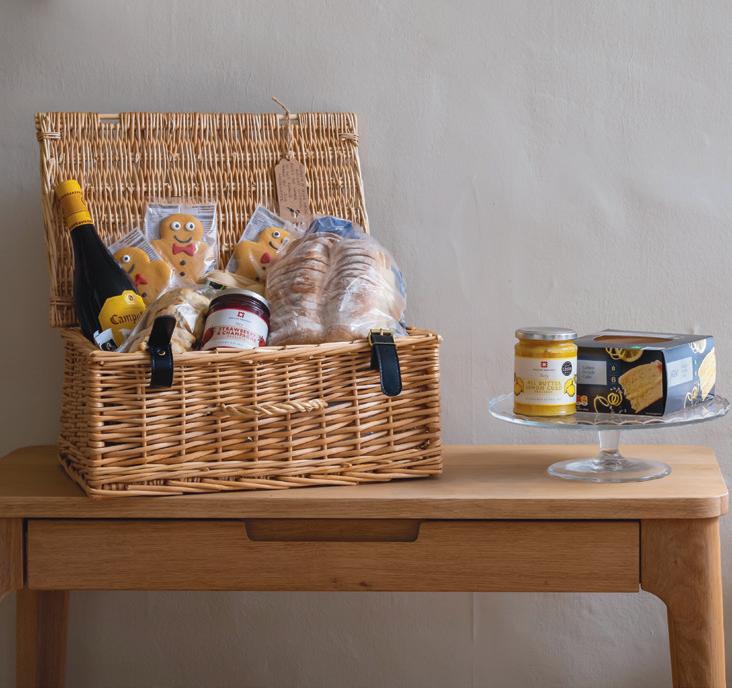


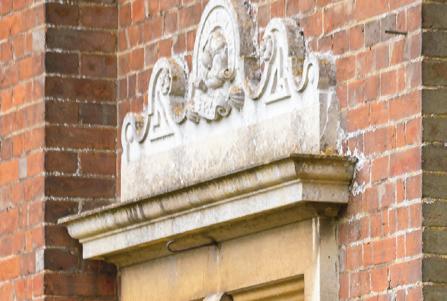
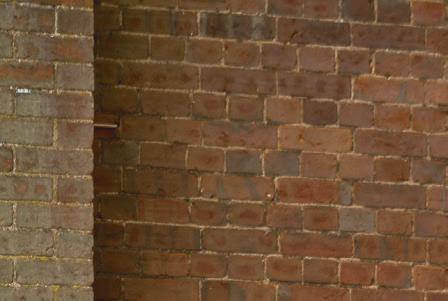


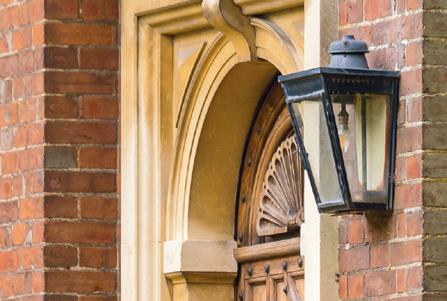

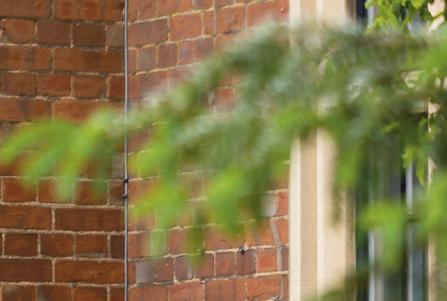
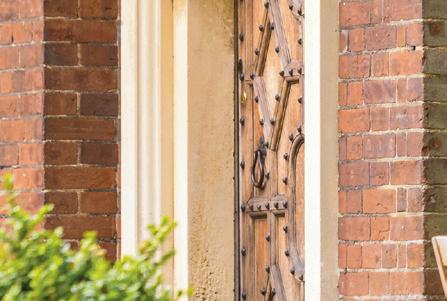

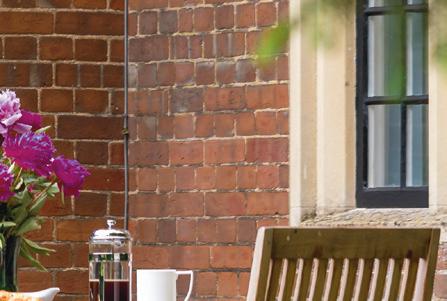
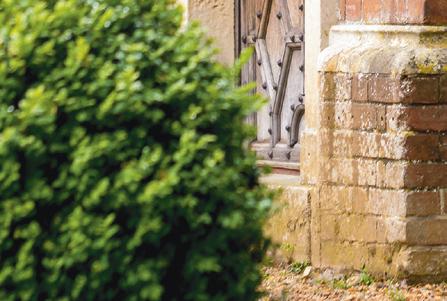
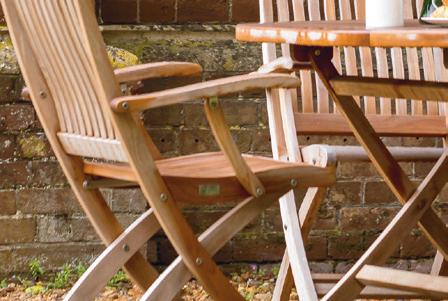
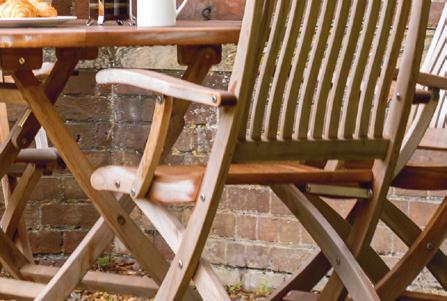


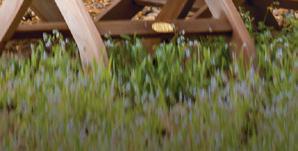 Garden area of Cambridge Lodge at Audley End House and Gardens, Essex | sleeps 4
Garden area of Cambridge Lodge at Audley End House and Gardens, Essex | sleeps 4
+cot
Luxury hamper on arrival
Pool House at
The Sergeant Major’s House at Dover Castle, Kent | sleeps 6 +cot Holidays with history Stay in one of our characterful holiday cottages and enjoy exclusive after-hours access to our historic sites. To book or to fi nd out more email holidaycottages@english-heritage.org.uk or visit www.english-heritage.org.uk/holidaycottages 10% OFF YOUR BOOKING ENTER DISCOUNT CODE EHTVOL10 Valid for stays until 31st March 2024. Cannot be combined with any other offer.
Witley Court and Gardens, Worcestershire | sleeps 8 +cot
On the cover:
The volunteer team at Arthur’s Stone, Herefordshire.
If you’d like to contribute to the next edition of Volunteer Focus or if you have any feedback on this issue, we’d love to hear from you: volunteerfocus@english-heritage.org.uk www.english-heritage.org.uk/volunteer 0370 333 1185

If you’d like this document in a different format, please contact: 0370 333 1181 customers@english-heritage.org.uk
Editor Anneka Coleman
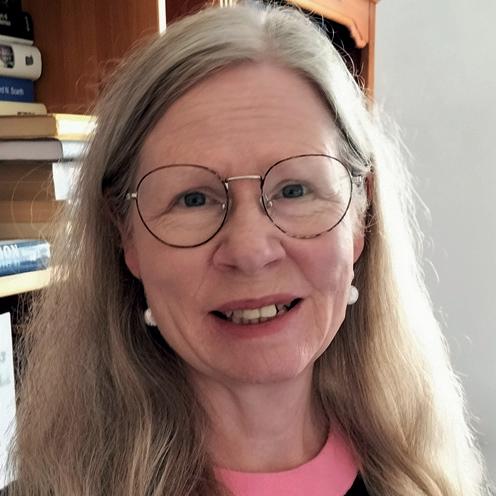
Designer Bronwen Reeves
Copy editor volunteers Ann Mateo, Lynne Baybut, Kirsty McEwen and Kelly Young
Thank you to all our contributing volunteers
The English Heritage Trust is a charity, no. 1140351, and a company, no. 07447221, registered in England.
Hello and welcome
Despite soaring temperatures this summer, volunteers were out and about as usual, welcoming visitors and busying themselves behind the scenes. The museum at Byland Abbey, where I volunteer, made a delightfully cool and shady retreat on the hottest days. Helping to bring your stories to life is a new team of communication and copy editor volunteers. They’ve lost no time in going out to meet volunteers working on the latest projects and reporting back on their discoveries.
The PROJECT PROFILE on page 18 about Arthur’s Stone reveals fascinating finds from this Neolithic tomb, linked to King Arthur in the Middle Ages. In NEED TO KNOW on page 26 we hear from trustee Sue Wilkinson about English Heritage’s challenges and opportunities.
Finally, in YOUR STORIES on page 30 I report back on one of my two visits to Hadrian’s Wall sites, with a look at the remarkable Housesteads Fort art installation.
Volunteer Focus is your magazine – we want to hear your stories, so please get in touch. Gillian Sulley, communications volunteer
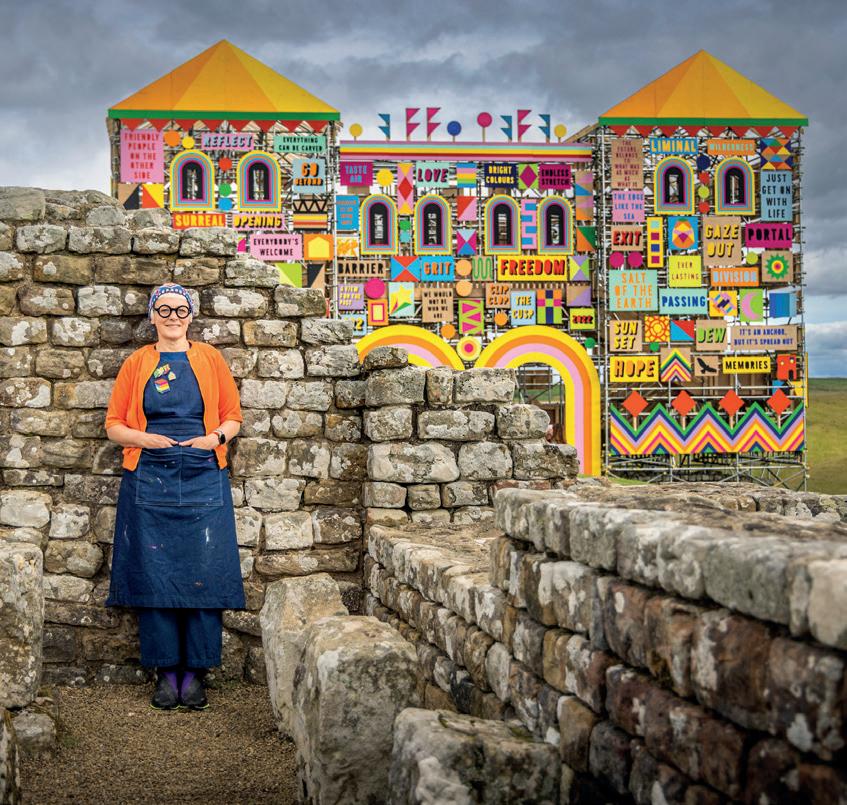
english-heritage.org.uk 3 WELCOME
(CM7517_11/22)STE4,400
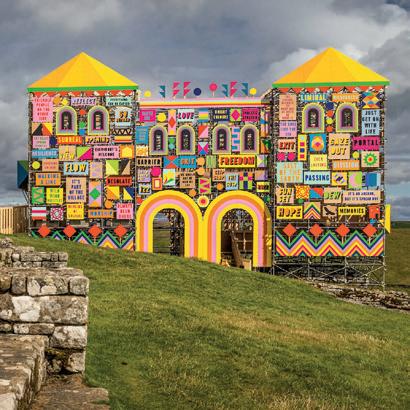
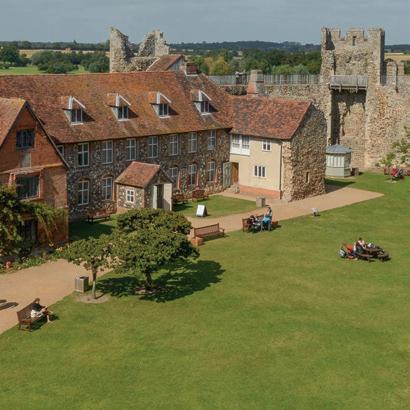
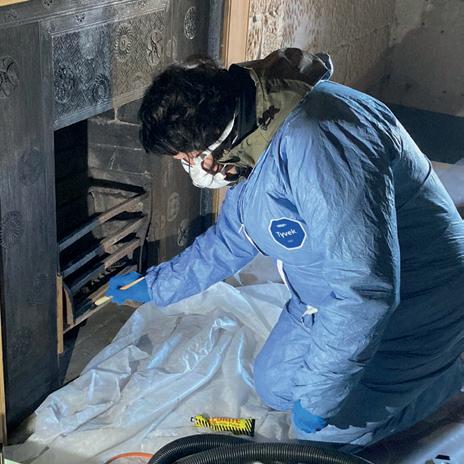
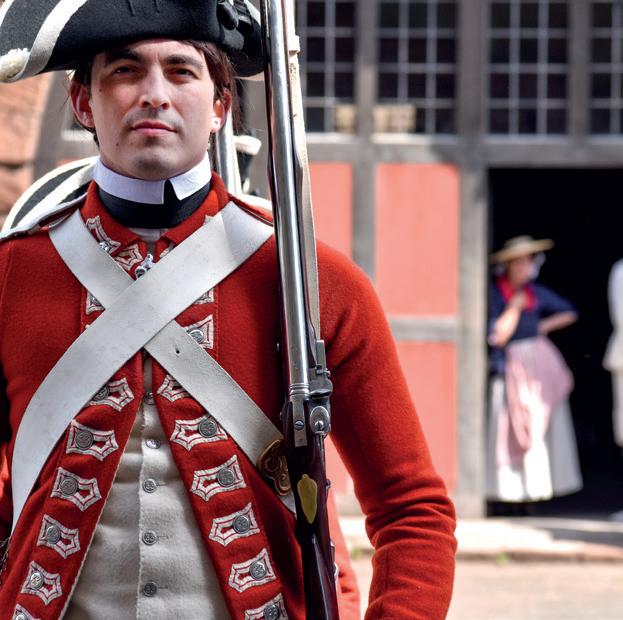




english-heritage.org.uk 4 FEATURES REGULARS CONTENTS 8 ROUND UP Creatures great and small 16 NEED TO KNOW Fundraising for the future 18 PROJECT PROFILE Discovering Arthur’s Stone 26 NEED TO KNOW A trustee’s point of view 28 PROJECT PROFILE Past lives in the workhouse 5 CHARITY UPDATE News from the chief executive 6 OUT AND ABOUT Find out what’s been happening 12 YOUR STORIES Bringing Chester Castle to life 14 WE DID IT! Digging the Wall 24 WE DID IT! Fired up: fireplaces at Belsay Hall 30 YOUR STORIES Visiting the art installation at Housesteads Roman Fort 33 OVER TO YOU Readers’ images, crossword and ask the curator 12 8 18 24 28 30 14
An update from Kate Mavor

Celebrating the difference you make.
At this time of year, many of you are helping to welcome visitors to our sites over the winter, while others have stepped back from your role until the new season in spring. Either way, thank you so much for your support – so much of our charity’s work simply wouldn’t be possible without your time, enthusiasm and expertise.
Building support
I’m delighted to report that this support is growing. We now have more active volunteers than ever before, with over 4,200 of you helping us to inspire people to enjoy our heritage and protect it for future generations.
From Cornwall to Cumbria, you are monitoring our free-to-enter sites, supporting education, tending gardens, helping behind the scenes in offices and archives, and above all passing
on your passion and enthusiasm to visitors. In addition, many more young people have been volunteering with us, thanks to our Shout Out Loud youth engagement programme.
Listening to and acting on feedback Making sure everyone has a great volunteer experience is an important priority for us. Our people are at the heart of the 2022–25 Strategic Plan, and we aim to make everyone feel valued, included and respected in their roles.

By becoming a more equal, inclusive and diverse organisation, the charity will be an even better place to work and volunteer.
In the last issue we shared feedback from the volunteer survey in autumn 2021 and our plans to make things better. We’ve already taken some great strides forward. To help you access information, news and feel connected to others, we’ve opened up access to Fuse, our digital learning and internal communications platform and app. We’ve reviewed guidance on uniforms to make sure everyone gets the right gear for their role, and we’ve also introduced online induction sessions to help new volunteers understand
the charity’s work and purpose. New sessions are also giving all volunteers more insights into membership. The loyalty of our Members is so crucial in funding our educational and conservation work, and it’s great to see you talking to visitors about where they plan to visit next, or what events they hope to come to – this really helps to raise awareness of our membership offer.
There’s more to be done, including reviewing the expenses process and improving how we engage with you and recognise your contributions. We’re particularly keen to get your feedback more regularly and to find new ways to involve you in project planning and decision making. This spring we’ll be inviting you to complete a survey about your experience as a volunteer. We’ll use the results to make changes and improvements, so it’s well worth sharing your views.
As ever, this edition of Volunteer Focus helps to show the variety of ways you can get involved in the charity’s work. I find it really inspiring to hear your stories and I hope you do too. Thank you, as ever, for your support. ■
GET INVOLVED
To find out about current volunteer opportunities across the country, go to www.english-heritage.org.uk/volunteer
english-heritage.org.uk 5 CHARITY UPDATE
Lucy Zammit at Arthur's Stone
I find it really inspiring to hear your stories
OUT AND ABOUT
New volunteer induction sessions
These one-hour, monthly online sessions are led by our territory volunteer managers and cover an introduction to English Heritage as a charity, our strategy, values and behaviours, structure and geographical reach. We discuss volunteer-specific policies such as expenses, surveys, passes and the safeguarding policy.

The dates are advertised in the newsletter and on Fuse or you can ask your manager. Everyone is welcome, whether you are just starting your role or have been here for a number of years. So come along and find out more while meeting other volunteers.
SHARE YOUR NEWS

We’d love to hear from you by email at volunteerfocus@english-heritage.org.uk
Yoga at the castle

De-stress with new wellbeing activities held at Walmer Castle’s beautiful gardens and nearby beach. Charlotte O’ Malley, who runs the wellbeing programme, says ‘the rhythmic ripple of the sea, the rustling leaves in the Queen Mother’s garden and the birds singing – combined with the sea air – anchor our thoughts and relaxes our senses. A local gym or church hall simply cannot compete’.
More unusual yoga sessions include chair yoga and laughter yoga, which is designed to flood your body with ‘happy hormones’. There are free weekly walking groups for people to unwind and reconnect with nature and each other. Other therapeutic activities include deep drumming meditation and forest bathing. Monthly workshops under discussion include nutrition talks and writing groups for children with autism and social anxiety. Let’s hope more will follow.
Book your place now and receive a discount. Visit our website and enter the code EHTWELLBEING2022. www.english-heritage.org.uk
english-heritage.org.uk 6
All the latest news and notices from across English Heritage.
Get 25% OFF at English Heritage shops and cafés with your pass or quote code EHVT673 to receive the discount in our online shop.
Charlotte in the grounds at Walmer Castle
(L-R) Uma Prince and Denise Sealy at Kenwood
Never too late to learn
English Heritage struck gold when they advertised for volunteer photographers and Nick Hine and Brian Morris stepped forward. They were both experienced photographers, but shooting the Clayton Collection threw up a host of new challenges. It took a great deal of trial and error to master the best shutter speed and aperture (to highlight the inscriptions and carvings), adjust the backdrop to get a correct colour reproduction and add scale bars to indicate size. Working among the overcrowded and heavy tombstones and altars was a feat in itself. Brian and Nick are fast becoming experts and are getting quicker, which is just as well when you consider all the stone and pottery items awaiting photography at Housesteads and Corbridge. What a wonderful legacy Nick and Brian will leave behind for future generations.
Get 10% OFF your stay at an English Heritage holiday cottage. Use discount code EHTVOL10 when you book online or call 0370 333 1187.


DON’T FORGET

Your volunteer pass allows FREE ENTRY for you, one other adult and up to six children (under 18 years and in the family group) to all English Heritage managed properties. To book your visit online quote code EHT2022 .

english-heritage.org.uk 7 OUT AND ABOUT
Volunteer Pass
Oyou’ll find the latest news and information you need
We
and
you need a
of your login details contact us
ARE YOU
ur online communications portal is where
while volunteering.
share essential updates, charity news, volunteer stories and important documents such as policies and handbooks. You can also complete online learning sessions
sign up for training and social events. If
reminder
at: ehfusequeries@english-heritage.org.uk
ON FUSE?
BRINGING LEARNING AND INFORMATION TO LIFE Posing with the altar stones
ROUND UP
CREATURES GREAT AND SMALL
From woolly wonders to feathery friends, communications volunteer Matt Huggins catches up with the volunteers responsible for the care and management of the animals who call our sites home.

english-heritage.org.uk 8
Main image Ducks at Wrest Park
Left Wrest Park bird survey team
(L-R) Jason Bagge, Dick Godwin and Ian Stirk
Above Maureen the Boscobel House sheep
Below Tamworth pigs at Boscobel House

WREST TWITCHERS A VICTORIAN FARMYARD
Jason Bagge, Dick Godwin and Ian Stirk formed a team of volunteer bird watchers to help complete a survey at Wrest Park.

Bedfordshire is home to the stunning Wrest Park, which offers a great variety of much-needed habitats including lawns, woodland and waterways. Every Sunday morning, come rain or shine, a group of volunteers heads out before visitors arrive, armed with pen, pencil, binoculars and a field book. Twitchers Jason Bagge, Dick Godwin and Ian Stirk formed a team in July 2021 following a call for help completing a bird survey.
‘Sometimes we split up, but often walk round together, catch up on life and have a general quiet chitchat as we scan the area for signs of movement. It’s a great privilege to have the park all to ourselves, and gives us a chance to see some of the shyer birds,’ says Jason.
With just 12 months of data, they have recorded 81 species and over 1,900 birds, including kingfishers, green woodpeckers and Egyptian geese. Ian and Dick also recently gave a presentation to fellow volunteers to give them a better understanding of the birds that can be found and likely places to look.

‘Some of the bird calls are becoming familiar too, like the short fluty whistles of the song thrush and the delightfully tuneful robin which gives a happy lift to the day.’
Boscobel House in Shropshire is well known for its past as a hunting lodge, but less so for its farming history. However, with the introduction of the farmyard in 2021, this may be about to change.
Having once been a mixed farm, the site now provides a much-needed home to several rare breeds. Included on this list are the critically endangered Tamworth pigs and Dorking hens (first described in England in the first century AD), as well as a flock of Call ducks. And of course, we couldn’t possibly talk about Boscobel farmyard without mentioning their poster girl: Maureen the sheep. Described as ‘chill’, by volunteers, Maureen is
all too happy to pose for photographs, help with talks and generally be the star she was born to be.
The animal care volunteers muck in and support staff with many of the delights that come with keeping livestock, including cleaning, feeding, watering and medical care. If you feel that this would be something you would enjoy, the Boscobel farmyard team are currently looking for outdoor steward volunteers. The role involves helping on the farm and talking to the visitors about the rare breeds that live here. ►
english-heritage.org.uk 9
The animal care volunteers muck in and support staff with many of the delights that come with keeping livestock
THE DONKEYS AT CARISBROOKE CASTLE
Helen Hopper is one of the volunteers responsible for looking after the resident herd at Carisbrooke Castle.
Donkeys have been a familiar sight at Carisbrooke Castle on the Isle of Wight for hundreds of years. They were used to raise buckets of water from the well, via the huge oak wheel built in the 1580s, and you can still see donkeys demonstrating this today. However, their workload is significantly lighter, and they spend most of their time relaxing in their stables and stretching their legs in the paddock.
Mucking in and out Helen Hopper is one of the volunteers responsible for looking after the resident herd and is quick to point out that a never-ending amount of poop is
FIND OUT MORE
a major feature. As well as continually clearing the stables and field, the team also get involved with grooming coats, picking out feet and generally keeping an eye on their welfare, making sure that everything is as it should be.
‘I love volunteering with them, the cuddles are the best, and getting to know their personalities is very entertaining,’ says Helen.
When asked who her favourite donkey was, she compared it to choosing a favourite child. However, if she absolutely had to pick, Helen’s favourite would be Jill, who, whilst small, is unquestionably the head of the herd and a fine example of a powerful female.



Working with animals can be hard work, but highly rewarding. If you are interested in volunteer opportunities near you, email volunteer.enquiries@english-heritage.org.uk or call us on 0370 333 1185.
Above
english-heritage.org.uk 10 ROUND UP
A donkey using the tread wheel to raise water from the well
Main image Jack demonstrates the wheel
Jill - Helen’s favourite donkey
Below Jack
Getting to know their personalities is very entertaining
THE AVIARY AT KENILWORTH CASTLE

The spectacular aviary set in the beautiful gardens of Warwickshire’s Kenilworth Castle has been active since 2009. The team of volunteers and employees caring for the aviary has grown and Amanda has been using her background in zoology to support the team for over a year.
Beak, hoof and fin Amanda helps to clean the aviary, and feed fruit and seeds to its residents, which are quails and lizard canaries – believed to be the oldest type of domesticated canary. She also enjoys delivering a well-researched talk to visitors, which she has truly made her own. Titled ‘Beak, hoof and fin’, the talk covers not only birds, but also the wide range of other animals who live or once lived at the castle.
A bright future Amanda is always satisfied when she sees a nice clean cage at the end of the day. As the birds fly around and sing, she knows the work she does is appreciated. Indeed, thanks to the dedicated team, visitor engagement has been noticeably higher and the aviary now looks to be heading into the bright future it deserves. ■
Below A canary

english-heritage.org.uk 11 ROUND UP
We hear about volunteer Amanda Jones’ role in the aviary at Kenilworth Castle.
Main image The aviary in Kenilworth’s Elizabethan Garden
Bringing a castle to life
Lead volunteer at Chester Castle



Gary Ashby celebrates a season of events.
Ihave been involved in historical interpretation and living history portrayal for over 40 years and through my roles as an employed visitor assistant at Beeston Castle, and as a volunteer at Chester Castle. It seemed a logical next step to recruit re-enactor volunteers to enhance the visitor experience at Chester through a unique set of themed open days.
Events unfold
Chester Castle, a free-to-enter site, is unique in the portfolio of English Heritage sites. It had previously been under the control of the Crown States and Ministry of Defence and was, until June 2021, rarely open to the public. However, that changed as the west free sites team set to work planning a series of dynamic open events to showcase the history of the site and its unique combination of medieval and classical Georgian architecture. The castle has also recently been recognised for the award-winning conservation programme carried out by English Heritage, Historic England and other local stakeholders in the newly worked upon 12th-century Agricola Tower. This year we introduced the addition of a second-hand bookshop run by volunteers.
Themed open days
In my role as lead volunteer, I have been working closely with Ginny Slade, free sites west territory volunteer manager.
1 2 3
YOUR STORIES
We formulated the idea of recruiting small numbers of people whose hobby focuses on re-enactment and living history to take on the role of re-enactor volunteers at Chester. To date, we have presented five historical events spanning three eras: the medieval era between 1220–1460; the English Civil War between 1642–1645; and the mid-18thcentury Georgian period, featuring King George’s Redcoats in garrison (1776). These key periods represent the different layers of the site’s history and we are proud to say that our themed open weekends have been a huge success, much enjoyed by both those taking part and the 5,000 visitors we welcomed during our five open weekends.
It really has given us the opportunity to showcase small scale quality interpretation and appreciate the 940 years of history the site has to offer, all of which was so enjoyed by all the re-enactment volunteers, local people and those visiting from further afield.
Collaborative working
It was a superb opportunity to work collaboratively with the team at Beeston Castle, Cheshire West and Chester Council, and the Military and Grosvenor museums who gave us so much support during the events and enabled us to demonstrate the links between the sites throughout their collective histories. It also highlighted that working together can increase membership and enhance visitor experiences. Working in this way at Chester Castle has made us aware that whether it be telling the story of civilian, church or material culture or life in the military, re-enactment adds so much more to the visitor experience and provides an opportunity for volunteers to share their passion and knowledge about history in a more interactive way.
Next year promises to be just as exciting as a number of themed open days are planned, ranging from the Saxons through to the Victorians. ■
FIND OUT MORE
To learn more about the history of Chester Castle visit www.english-heritage.org.uk/chestercastle
Images
Clockwise from bottom left
1. Chester Castle
2. Volunteer Malcolm Howard dressed as a Georgian Redcoat
3. (from left to right)
Volunteers Chris Holmes, Phillipe Le Pinnet, Freddie Le Pinnet and John Callow at a Civil War event
4. (from top to bottom)
Volunteers James Graves, James Baugh, Ricky Williams, Thomas Powell and Malcolm Howard dressed as Georgian Redcoats

4 english-heritage.org.uk 13 YOUR STORIES
Re-enactment adds so much more to the visitor experience
WE
DIGGING THE WALL

english-heritage.org.uk 14
DID IT!
It’s mid-August, on the day that the downpours are forecast after the latest hot spell.
Humidity and threatening clouds are not putting off visitors to Hadrian’s Wall site Birdoswald, and it’s as busy as ever at this popular spot close to the Cumbrian border. For the second year running there has been an extra element to the experience here. Four trenches have been excavated by archaeology students from Newcastle University in association with English Heritage and Historic England. There’s a buzz around new evidence of a Roman bathhouse, previously thought to be part of a signal tower.
Sharing the news Les and Jane Gill prove that volunteering can be a family affair. As husband and wife, they join forces to lead tours. Jane concentrates on the wider social context of life on the edge of the Roman Empire, whilst Les focuses on the stonework and ruined buildings. There’s also a strong ‘landscape archaeology’ theme focusing on the wider context of location and how people used the surrounding environment.
To be continued Les and Jane began as site monitors in 2020 and shortly afterwards joined the Birdoswald team in time to lead tours incorporating the digs.
‘Visitor reaction has been really positive,’ says Les. ‘We’ve sensed how much they have enjoyed the tours this year and there is an increase in the number of tour participants when the trenches are part of the route'.

Of course, there are benefits for the guides too. As Jane explains, ‘It’s been great fun: all the crew and students are lovely and you learn an awful lot. As with last year, the volunteers toured the site with visitors and brought them to the trenches, where they handed over to the students and archaeologists for interpretation of the excavations.’


The excavations have now finished for this year and will return to Birdoswald in 2023. The volunteers eagerly await further developments to share with their visitors. ■

FIND OUT MORE
To learn more about the project visit www.birdoswaldproject.com
english-heritage.org.uk 15 WE DID IT!
Communications volunteer Gillian Sulley catches up with Birdoswald Roman Fort tour guide volunteers Les and Jane Gill, to hear about their summer of tour guiding.
All the crew and students are lovely and you learn an awful lot
Main image Looking east along a stretch of Hadrian’s Wall near Birdoswald Roman Fort Left Archaeologists from Historic England and Newcastle University excavate the Roman settlement east of the fort Above Les and Jane Gill
NEED TO KNOW
FUNDRAISING FOR THE FUTURE
Communications volunteer Laurie Benson explores the role of wills and legacies in fundraising for English Heritage’s future.
English Heritage became a charity in 2015, and it was given funding from the government each year to help it make the transition. That funding has now come to an end, making it more important than ever for the charity to seek support from members of the public.
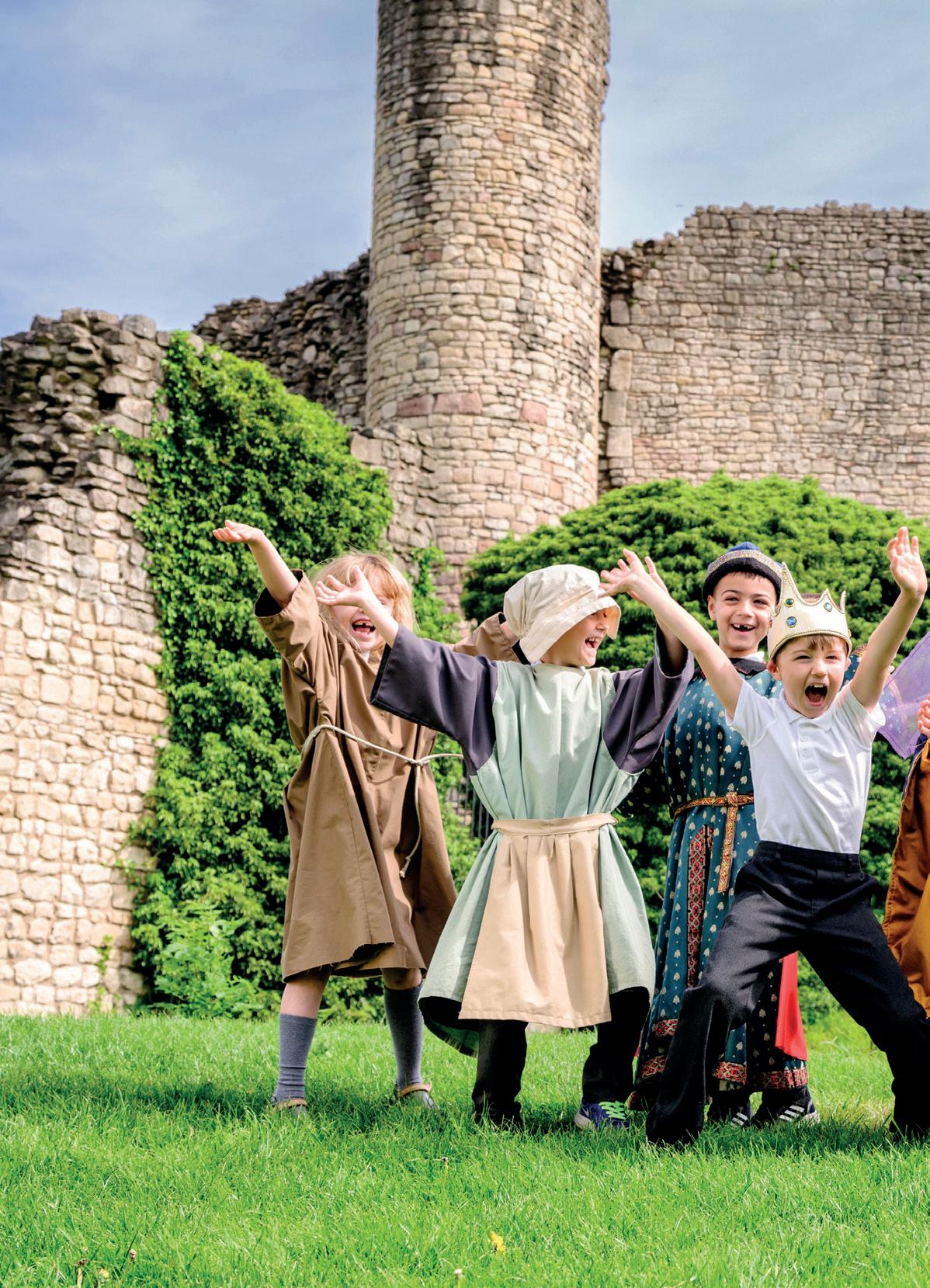
Types of donation
I do not have any great knowledge of fundraising, so speaking to Holly Kavanagh, the guardians and legacies manager, was enlightening. Her department manages gifts made in wills, a revenue stream which raises around £3 million each year. This is made possible by the generous donations of those who are passionate about English history, and with one in five wills in the UK being charitable, which amounts to £3 billion a year, there is undoubtedly room for growth.
There are several types of donation options: a fixed amount, a percentage of an estate, or the gift of a property or item. With all proceeds directed towards conservation and education, such gifts allow English Heritage to continue their work caring for the nation’s heritage for generations to come.
Partnership
In partnership with Make a Will Online, English Heritage is launching a new free will-writing service, which is available to volunteers, staff and Members to make the process of donating easier and more accessible. English Heritage’s new service enables people to create wills remotely, and every will is checked by a solicitor in accordance with the Solicitors Regulation Authority.
This enables supporters to donate at their leisure with the assurance of full industry standards safeguarding their future. Alongside this, by writing a will with Make a Will Online, legacy pledgers will become part of the English Heritage Legacy
FIND OUT MORE
For more information about the free will-writing service visit www.english-heritage.org.uk/support-us/gifts-in-wills or email holly.kavanagh@english-heritage.org.uk
Clockwise from top An education visit at Conisbrough Castle; conservation of Lincoln Medieval Bishops’ Palace; the team caring for the gardens at Belsay Hall
Circle. This gives them the chance to attend four bespoke events each year led by curators, giving exclusive experiences few can boast of.
How you can get involved
There are many ways volunteers can be involved in fundraising for English Heritage, and Holly Kavanagh suggested that the best way to help with the legacy programme is to act as an advocate. Because it’s a new programme, awareness needs to be raised and volunteers are in a prime position to promote the service to Members, staff and fellow volunteers. It is a fantastic way to make sure that those who are passionate about history can help safeguard it for future generations. ■
16
english-heritage.org.uk
Such gifts allow English Heritage to continue their work caring for the nation’s heritage for generations to come

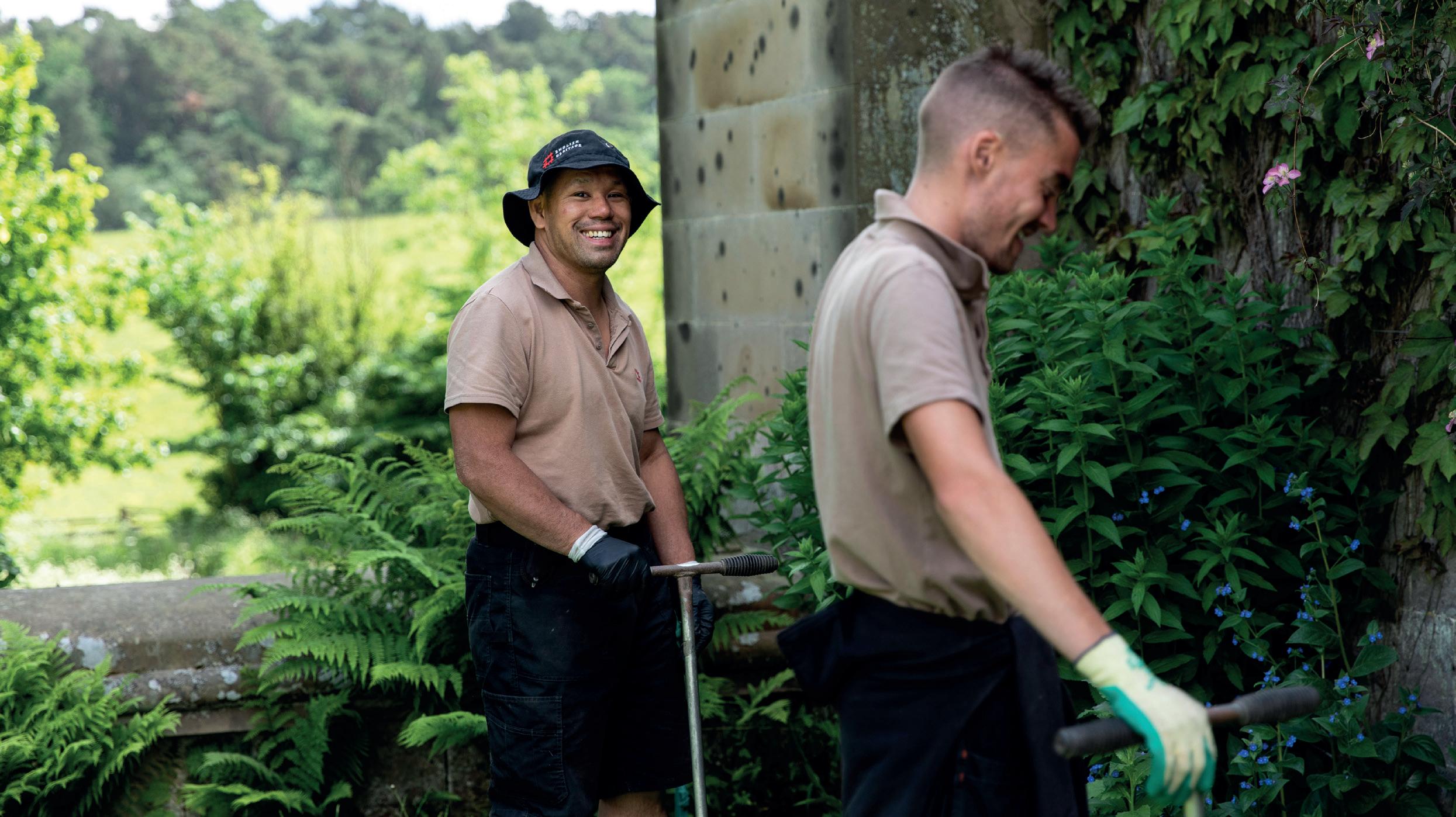

english-heritage.org.uk 17 NEED TO KNOW

english-heritage.org.uk 18 PROJECT PROFILE
PROJECT PROFILE
DISCOVERING ARTHUR’S STONE
Tour guide volunteers enabled visitors to see archaeology in action at Arthur’s Stone, one of our most significant Stone Age monuments. Clark Beken, communications volunteer, tells us more. ►

english-heritage.org.uk 19

english-heritage.org.uk 20 PROJECT PROFILE
Arthur’s Stone in Dorstone, Herefordshire, is a Neolithic burial chamber situated on a hill overlooking the Golden Valley and the Wye Valley. The chamber consists of nine upright stones topped by a large capstone, possibly weighing 25 tonnes. The first chamber was probably erected in the 38th century BCE, early in the Neolithic (4000–2400 BCE) or ‘New Stone Age’, when farming began in Britain. Subsequently a cairn of stones, contained within a drystone wall, was built around it, and at least one other burial chamber was inserted.
Fact or fiction?
According to legend, it was here that Arthur killed a giant, who left the imprint of his elbow upon the stones as he fell. More recently, it’s known that author CS Lewis was inspired by the area when creating his fictional world of Narnia, and that Arthur’s Stone was the inspiration for the stone table where Aslan the lion was sacrificed in The Lion, the Witch and the Wardrobe.
Why excavate?
This year, permission was granted for an archaeological excavation at Arthur’s Stone. It was part of a joint project between English Heritage and the Universities of Manchester and Cardiff. Professors Julian Thomas and Keith Ray led the project. Professor Thomas said of the excavation that it ‘seeks to restore Arthur’s Stone to its rightful place in the story of Neolithic Britain’.
The latest excavations were intended to uncover the phases of the monument’s construction, giving a new insight into tomb builders and helping us to further understand the complex changes in the monument’s design.
As part of the project, English Heritage was keen for visitors to see the dig in progress and learn about the site. Twelve tour guide volunteers were recruited and trained, as well as photography volunteers, who captured the project as it progressed. Here they discuss their experiences. ►

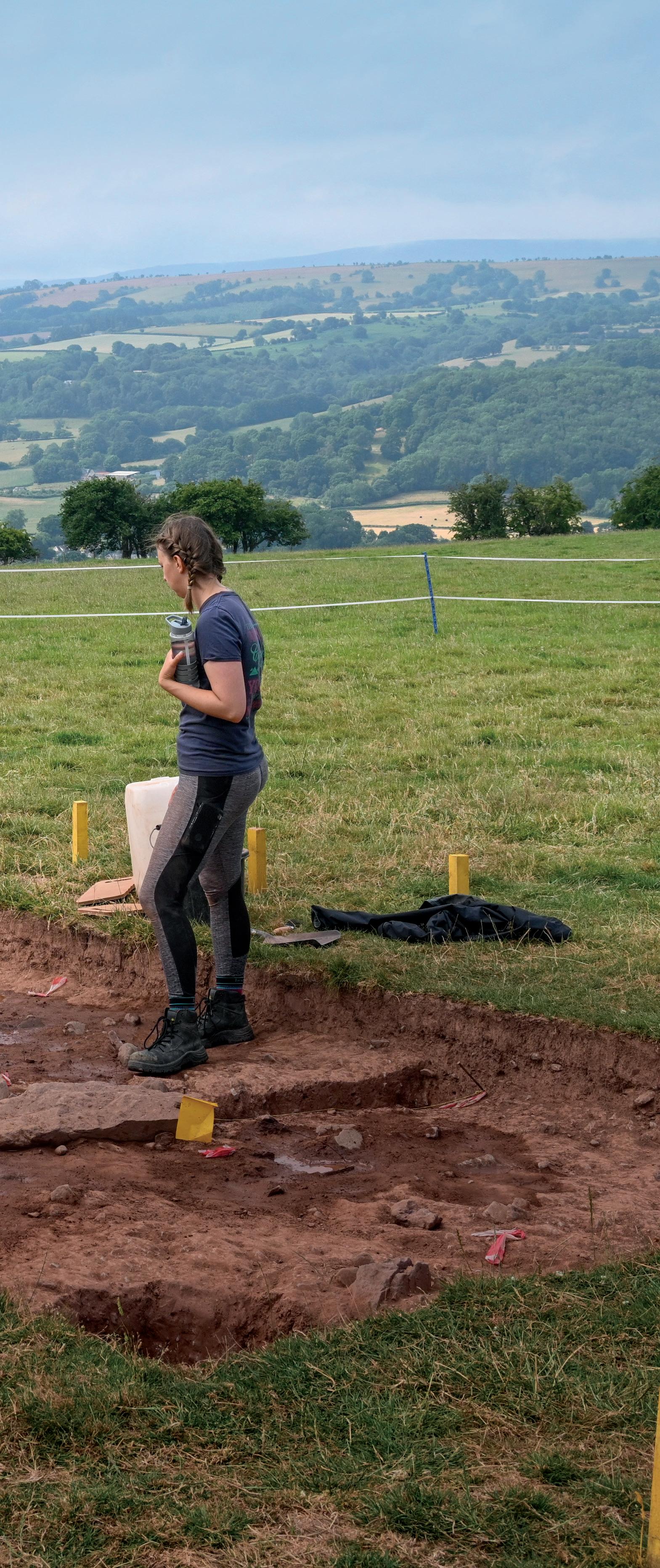
english-heritage.org.uk 21 PROJECT PROFILE
These tombs were amongst the first megalithic structures in Britain, over a thousand years older than the great sarsen circle at Stonehenge, and Arthur’s Stone is one of the most impressive Win Scutt, properties curator, west
I have always been passionate about history and was already involved with my local heritage group. I’d met Professor Keith Ray previously when visiting archaeological digs in the Dorstone area. When a call came asking if I wanted to get involved, I jumped at the chance. After the initial induction, we were given background information on local Neolithic history and the all-important rota.
When I led a tour, I first explained what is meant by Neolithic, the significance of Arthur’s Stone and the importance of the dig. I learnt so much from the archaeologists and loved being able to impart their knowledge to the visitors, whilst allowing the diggers to get on with their work. The visitors had lots of great questions and kept me on my toes discussing different aspects of the history and the importance of the site. On the final Sunday, we had a big open day, which was really well attended and rounded off the project very successfully.

I really valued the experience and, like other volunteers, I am continuing to help monitor the site. Ironically, because the site is even busier now, our help is even more important. I’ve learnt a lot about Neolithic history and I’d be happy to be involved again. Ian Stead, excavation tour guide volunteer

I was familiar with the site, as I’d been a photography volunteer before the project began. I’ve been a keen amateur photographer for many years, and since retirement getting involved with English Heritage has combined my hobby with doing something both interesting and useful. It’s really important to me to have a structured interest in retirement – I’d recommend it to anyone – so when the opportunity arose to join as a volunteer
I was keen to sign up. I visited Arthur’s Stone four times over the course of the project to familiarise myself with the work, follow tours and take photos. I also took the opportunity to chat with the guides and archaeologists to learn more about the ongoing work and history of the site. The Neolithic archaeology of the place is amazing and I learned a lot – including how much there is that we don’t know.
One conversation with an archaeologist that made me appreciate the extent of their knowledge was when we were looking at a bone fragment. She instantly knew it was part of a human skull.
I really enjoyed my time on the project and I continue to volunteer as a site photographer at other local sites. The photos I take contribute to English Heritage’s collection of images for promoting its work.
Andrew Knowles, photography volunteer
I live close to the site, so it had always interested me, but it was seeing an advert for tour guide volunteers that prompted me to sign up. We were given an informative talk by the project lead professors. Most of us already had a superficial knowledge of ancient history that proved useful.
Every day when we arrived on site, I chatted with the archaeology team to learn the latest new discoveries. This was fascinating, and important, for keeping the tours up to date. After organising the visitors, I usually made a point of getting one of the archaeologists to talk to them and answer questions. Some visitors knew a lot; some knew a little but were keen to learn more. The archaeologists were always friendly and happy to help.
I enjoyed explaining things to the visitors and as a group we became slightly obsessed with keeping up to date with the latest discoveries.
Jude Cooper, volunteer manager
1 2
english-heritage.org.uk 22 PROJECT PROFILE
We became slightly obsessed with keeping up to date with the latest discoveries
4
The Neolithic archaeology of the place
We wanted to make sure the volunteer guides played a key role when opening up this nationally important site to visitors. The team have been brilliant advocates for English Heritage and I am delighted that we have a legacy of regular volunteering, with some members staying on to monitor the site as it recovers from the excavation.
 Ginny Slade, volunteer manager
Ginny Slade, volunteer manager
PLAN YOUR VISIT
Images
Page 20–21
Main image Students from the University of Manchester at the site Smaller image A student uses the Total Station to survey the site
These pages
1. University of Manchester professor Julian Thomas, with students 2. Volunteers Paul Nickholds and Lucy Zammit 3. University of Manchester students 4. (L-R) Volunteers McHale Morris, Jenny Edwards and Wendy Pitchford with Win Scutt and volunteer manager Ginny Slade 5. (L-R) Volunteers Jude Cooper, Andrew Knowles, Ian Stead, Jake Bharier and Pam Thom-Rowe 6. Visitors learn about the site
Arthur’s Stone is a free-to-enter site. For more information visit www.english-heritage.org.uk/visit/places/arthurs-stone
The volunteers delivered their tours to over one thousand visitors and were well received by all including Kate Mavor.

‘My guide, Ian, was excellent and I thought he really enhanced the visitor experience. Ian told me how thrilled and honoured he felt to have been asked to be a tour guide. All this is part of how we will encourage people to feel warm towards English Heritage and contribute their energy and great local ideas.
Thank you to everyone involved.’
Kate Mavor, chief executive
WHAT’S NEXT?
With ever-more exciting evidence emerging, it’s clear this area was an ancient ceremonial landscape similar to Stonehenge. The team are eager to continue the dig when they return next summer, and when they do, the English Heritage volunteers will be ready to help. ■


3 5 6
english-heritage.org.uk 23
PROJECT PROFILE
is amazing
WE DID IT!
Fired up
Project conservator Leesa Vere-Stevens explains how conservation helped uncover the secrets of Belsay Hall’s fireplaces.
Volunteers and staff have been crucial in understanding and conserving fireplaces and a kitchen range at Belsay Hall, Northumberland.
Belsay Hall was designed by Sir Charles Monck between 1807 and 1817 and has around fifty rooms, most of which still have fireplaces. There are also cooking ranges in the kitchen areas.
Volunteers Jill Huxtable and Bronia Banecki worked on a fireplace in a second-floor servants’ room alongside visitor assistant Michelle Beattie. They worked on this fireplace and five others over four days to return them to a sustainable level of conservation.
Bees and butterflies
The team, which also included visitor assistant Simon Donaldson and volunteer heritage consultant Richard Mason, discovered that two of the fireplaces were designed by Thomas Jeckyll (1827–1881), a pioneer designer in the British Aesthetic Movement. Our fireplace surrounds bear a small roundel embossed with two butterflies, and
this was how Jeckyll signed his designs for the Norwich foundry Barnard and Bishop. Jeckyll worked with Charles Barnard, of Barnard and Bishop, from 1850 but when Barnard’s two sons joined the company in 1859 the firm used a four-bee motif – as seen in another roundel on our fireplaces. The firm then became Barnard Bishop and Barnards.
Battling rust
These fireplaces needed extensive treatment. The team rubbed them down with wire wool to remove rust, vacuumed and then treated the cast iron with black stove polish, which may have been used to maintain them when in regular use.
The volunteers are continuing to work on other fireplaces throughout the hall and our work is enriching our knowledge of how it was originally fitted out. The two Jeckyll fireplaces
PLAN YOUR VISIT
Come and see the results yourself. For more information visit www.english-heritage.org.uk/belsay
conserved so far were in servants’ quarters and we realised that there are identical models within two principal bedrooms, all dating from after 1859 as they exhibit the four-bee motif.
Moving the kitchen
The team have used their expertise in fireplace refurbishment to help restore a kitchen range and have provided information in the hope of solving one of the hall’s kitchen mysteries, concerning the range in Sir Arthur Middleton’s new kitchen. Sir Arthur inherited Belsay Hall in 1867 and reconfigured the kitchen in 1912 to move food preparation from the old kitchen to the new – closer to his new dining room so his food was served hotter. The range was fairly dilapidated but, thanks to the refurbishment, details have emerged revealing it was a freestanding kitchen range manufactured by the Carron factory in Falkirk between 1906 and 1946. It could even have been installed by troops billeted to the hall in the Second World War, replacing Sir Arthur’s earlier installation.
The team’s work on the fireplaces and range is a classic example of how information is gleaned bit by bit, but can often be crucial in building a picture of the development of a site over time. ■
english-heritage.org.uk 24
These fireplaces needed extensive treatment

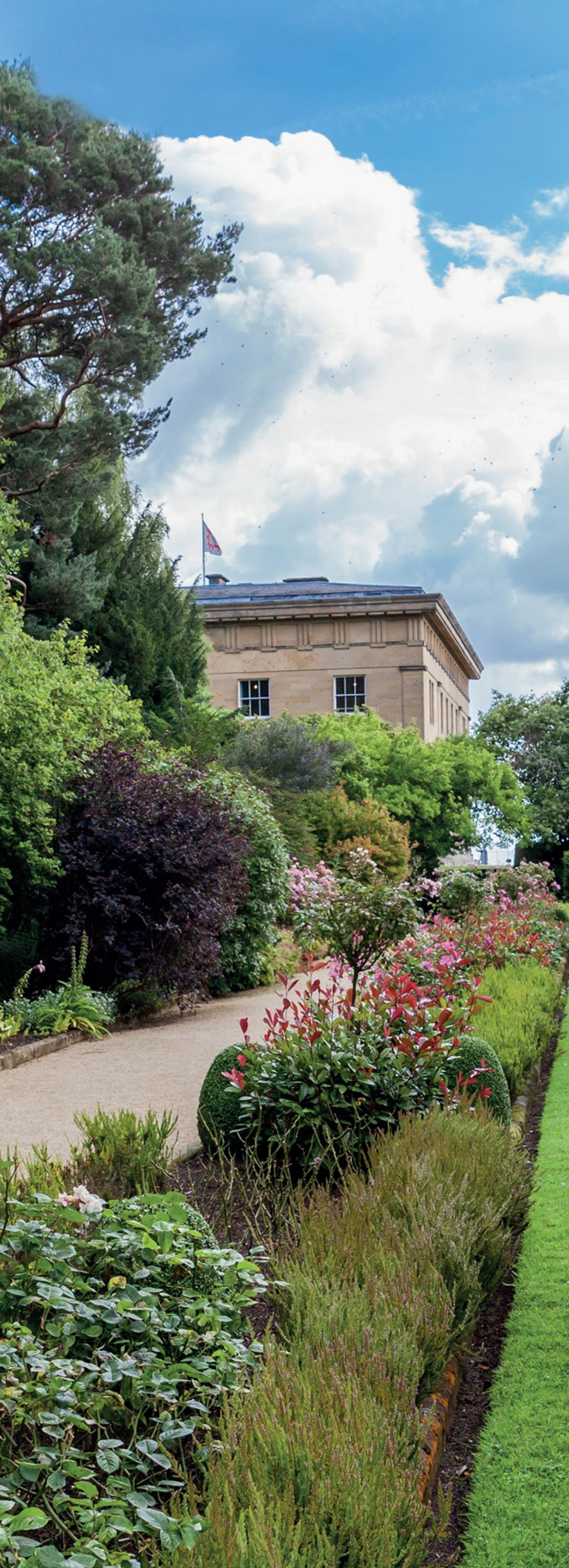




english-heritage.org.uk 25 WE DID IT!
Our work is enriching our knowledge of how it was originally fitted out
Clockwise from top Volunteer Bronia Banecki treating a Thomas Jeckyll fireplace; bee roundal showing the four-bee motif of Barnard Bishop and Barnards foundry; Belsay Hall; the kitchen range after treatment; visitor assistant Michelle Beattie at work treating the kitchen range; Thomas Jeckyll with his father
NEED TO KNOW
A TRUSTEE’S POINT OF VIEW

english-heritage.org.uk 26
Suzanne Wilkinson, communications volunteer, interviews recently appointed trustee Sue Wilkinson to find out more about her role.
Sue Wilkinson inside the newly refurbished Clifford’s Tower
What attracted you to volunteer at English Heritage?

English Heritage is rooted in history and my love of history began with my Isle of Wight childhood near Carisbrooke Castle. My first memory of the castle’s resident donkeys drawing up water in the well house, by means of a 16thcentury treadwheel, is a little bit of magic that remains with me to this day.
What challenges lie ahead?
Attracting more income and a wider audience is the overriding challenge. I’m encouraged that a young charity, such as English Heritage, under Kate Mavor’s leadership, is becoming selffunding so swiftly.
What excites you most about the next year?
Gerard Lemos takes over as chair of English Heritage next year. He has highlighted the importance of local communities to English Heritage and living in Dorset I fully endorse that. We may not have the biggest visitor attractions, but the Christchurch Castle ruins and the Norman House, where the Lord of Christchurch lived, are great places to soak up history before relaxing by the river.
How will ‘local community’ translate into action?
Local fundraising is crucial, especially for those considering leaving a legacy in their will. I witnessed this when I worked at the National Trust, where legacies were left by those who had a particular fondness for a place, either through
volunteering or through regular visits.
Now that we are no longer government funded, we need to dispel the notion that only rich people leave legacies. That’s simply not the case. Little sums add up and volunteers can make a huge difference, because even if you aren’t able to now, you can make a promise for the future.
What would you like to say to our volunteers?
Thank you – we could not do it without you. All trustees say the same but it’s genuinely meant. The growth in volunteer numbers following Covid-19 and lockdown shows a new appreciation for local spaces and makes many of us feel more connected than ever.
How do you see volunteering evolving?
The variety of roles is expanding and we need to publicise that more. As well as gardening or stewarding, there are translation volunteers at Hadrian’s Wall, animal volunteers at Boscobel House and maintenance volunteers to remove graffiti and change locks.
Some volunteers choose to use
WHO IS SUE WILKINSON?
Sue is a Commissioner of Historic England and until the end of 2016 was an executive board director at the National Trust, where she was the board lead on tourism with responsibility for membership, fundraising, volunteering and tourism. She is also a trustee of the Canal & River Trust whose remit includes 2,000 miles of waterways.
their existing skills, such as photography or journalism; others see it as an opportunity to try something new, such as storytelling or archiving. Whichever route you take, friendship and supporting the local community will improve your quality of life.
How are we going to attract more volunteers and Members?
We must keep our message fresh to attract new support. The expectations of visitors are changing so we have to modify our offering too. There are definitely opportunities for us to be more playful and imaginative – but I’d stress that just because something is fun or a bit different doesn’t mean it will be less accurately researched. There are lots of ways to authentically interpret and celebrate the past beyond the traditional, familiar methods – take the recent art installation at Housesteads Roman Fort, for instance.
How much of your time does being a volunteer trustee take up? There’s a lot of reading followed by board meetings, so together with my other trustee commitments, volunteering takes up to three days a week. I certainly don’t want it to sound onerous though – it’s a privilege. ■
BEING A TRUSTEE – WHAT’S INVOLVED?
Trustees sit on the board of English Heritage. Their role is to provide strategic direction and constructive oversight to make sure English Heritage delivers its goals and that it’s managed effectively. For more information please visit www.english-heritage.org.uk/about-us/our-people/our-trustees
english-heritage.org.uk 27 NEED TO KNOW
Thank you – we could not do it without you
Carisbrooke Castle where Sue’s love of history began
PROJECT PROFILE
PAST LIVES IN THE WORKHOUSE
Framlingham Castle was once at the centre of a vast network of power and influence, and Mary Tudor was proclaimed queen here in 1553. In 1729 a workhouse was constructed on the site of the castle’s great hall, to house the district poor. Just over a hundred years later, the last workhouse inmates left and the building was used as a parish hall.

Project overview
In October 2021, site volunteer Ant Wooding suggested a project to undertake more in-depth research into the lives of the workhouse inmates. A team of four coordinators and twenty two research volunteers were assigned to the Workhouse Project. They used a variety of sources, including the Monthly Return of Paupers, the archives of local newspapers and the Suffolk Record Office.
Stories uncovered Poverty: Sparrow Clow, 17, spent five days in the workhouse in 1812. For much of his life he claimed poor relief –he was even admitted the day after his marriage. His frequent admittance and discharge could have been caused by his seasonal employment as an agricultural
labourer. In 1892 The Framlingham Weekly News suggested his last known occupation was ‘foreman of the roadmen’. He died shortly after in Mill’s Almshouses, Framlingham.
An Unexpected Death: John Drake was admitted to the ‘Framlingham House of Industry’ in February 1813 and spent three years in the workhouse until his death in 1816. At roughly 70 years old he had suffered fits since his admission. When John failed to appear for breakfast one day, a 15-year-old inmate
with her baby daughter Lydia. An illegitimacy order names Lydia’s father as Freeman Webster who was subsequently imprisoned in 1835 for non-payment. No stranger to the workhouse, Freeman was admitted for two brief periods in 1829 and 1830. The couple were never reconciled. The 1841 census indicates that Lydia lived with her paternal grandparents.
Theft: After refusing to work, inmate Richard Moore was sent to prison on 25 February 1832. Soon after his re-admittance in March, he was subsequently sent back to prison, after stealing the workhouse reward box, with fellow inmate Jeremiah Marjorum. The Bury and Norwich Post , 11 April 1832, reports their sentence of three months imprisonment and a private whipping.
named Hannah Barker was sent to fetch him from the lodging rooms, where she found his lifeless body. A subsequent inquest attributes his death to ‘a visitation from God’ (natural causes).
Misconduct: Martha Brunning was readmitted to the workhouse in 1832
A Better Life: 1830 saw the Paternoster/ Drane family being admitted and spending just over one year in the workhouse. In 1860, Samuel Drane emigrated to Canada, finding employment as a gardener. In 1901, Samuel relocated to Welland, Ontario, a few miles from Niagara Falls, where he found work as a school caretaker, earning $150 a year. ■
english-heritage.org.uk 28
Visitor assistant Sam Cresswell uncovers the secrets of Framlingham Castle.
Castle
Four coordinators and twenty two research volunteers were assigned to the Workhouse Project
Framlingham
PLAN YOUR VISIT
In late November we’ll be launching workhouse tours which will further tell these stories, and the stories of other inmates. For details visit www.english-heritage.org.uk/framlingham

english-heritage.org.uk 29 PROJECT PROFILE
The workhouse at
Castle
Framlingham
YOUR STORIES
ON LOCATION
Visitors to Housesteads Roman Fort on Hadrian’s Wall may have been taken by surprise on approach to the site this summer. On the brow of the hill, the remains of the original north gatehouse are usually noted for their rugged, aged stonework, connecting the modern visitor to this once-thriving military site, and the bleak and beautiful landscape that was the final northern frontier of the Roman Empire. Now commemorating 1,900 years since the building of the wall, with its many forts and towers, by the Emperor Hadrian, the Housesteads site marked the occasion with a vast and colourful temporary art installation. The artwork entitled The future belongs to what was as much as what is was created by artist Morag Myerscough, poet Ellen Moran and the local community. In place from late July to

the end of October this year, it is a prominent structure, built over the footprint of the ruined Roman gatehouse.
A warm welcome
On a typical day in mid-August visitors make their way through the fields to the fort, and are welcomed by two volunteers who are relatively new to English Heritage, though both have given their time to the heritage sector in the past. Art explainer volunteer Martin Brunskill is stationed on the grass outside the installation. He is part of a team of around twenty volunteers recruited for the summer season and took part in specific training sessions unique to the project. Martin is busy greeting visitors, dealing with queries and enjoying some animated discussions on the unmissable new addition. He explains how he became a volunteer at Housesteads, and the effect this experience is having on his own life. ►
english-heritage.org.uk 30
Art explainer volunteers Martin Brunskill and Michele Sowerby talk to Gillian Sulley about widening their skill sets at a thought-provoking reimagining of the north gateway at Housesteads.
I’m really enjoying building up my confidence
PLAN YOUR VISIT
The artwork will be open to the public until Sun 30 October, but you can still enjoy the fort afterwards. Find out more at www.english-heritage.org.uk/housesteads

31 YOUR STORIES
english-heritage.org.uk
Previous page Artist Morag Myerscough stands next to her art installation entitled The future belongs to what was as much as what is Far left the art installation shown from a different viewpoint



Above Morag Myerscough Left Martin Brunskill
Summer break
‘I live and work in this area,’ Martin explains, ‘and have previously walked the length of the wall with my son. The 1900th anniversary celebrations presented new opportunities to become involved with Housesteads, so I joined the volunteer group here, introducing the artwork to our visitors. I’m currently taking a long summer break from my usual line of work as an accountant –helping here, the day goes very quickly. Being here ticks every box for me. I’m getting to meet the locals, hikers and other visitors, enjoying the outdoors and adding to my knowledge of the area at the same time. Going on from here, I’d certainly like to do more volunteering for English Heritage on other projects.’
Heading up the wooden steps into the main body of the artwork, an inner platform at a height of 4.2 metres (the original height of the wall) allows visitors, for the first time in 1,600 years, to enjoy the exact same viewpoint which the legionaries would have had. These days, the vista to the north is the peaceful, misty Northumbrian landscape, but it would have been a hive of activity, conflict and community during the Roman occupation.

Multitasking
Inside the structure, another member of the volunteer team, Michele Sowerby, explains to visitors how, as well as a barrier, the north gatehouse would have been an entrance, passageway and thoroughfare. It was from these concepts that Morag Myerscough, Ellen Moran and the community took inspiration for the installation.
Originally from Illinois, Michele has lived, worked and volunteered in the north east of England for many years.
‘I’m managing to combine my role as art explainer volunteer with my degree studies and my usual day job as a court reporter,’ says Michele. ‘To work with an artist on a new installation was an opportunity not to be missed. Through this project, I’m really enjoying building up my confidence speaking with the public. It’s helped me realise that I’d like to be out and about more in future, mixing with a wide variety of people.’
Lasting legacy
Local community groups were invited to join workshops with Morag and poet Ellen to conceive and collaborate on the design and production of the colourful plaques and it was their discussions about the history of the site and its relevance today that inspired the words. While the piece has inevitably divided opinion, the Romans themselves would have been very familiar with the use of colour and words on the outsides of buildings.
The installation was designed to be dismantled easily at the end of October, with the plaques being offered back to the community, and the elements of the scaffold reverting to their usual purposes. The experience will remain large in the memories and future plans of the volunteer team, the community groups who were involved and visitors who were here for the 1900th anniversary celebrations. ■
GET INVOLVED
Look out for news on how there will be more opportunities for art explainer volunteers at our other sites as the creative programme develops.
english-heritage.org.uk 32 YOUR STORIES
OVER TO YOU
A dedicated space for you.
YOUR IMAGES
Here are some more of the fantastic photos you have taken at the sites you have either volunteered at or visited. We love seeing your photos, so please continue to share them with us via the English Heritage Volunteers’ Facebook page.
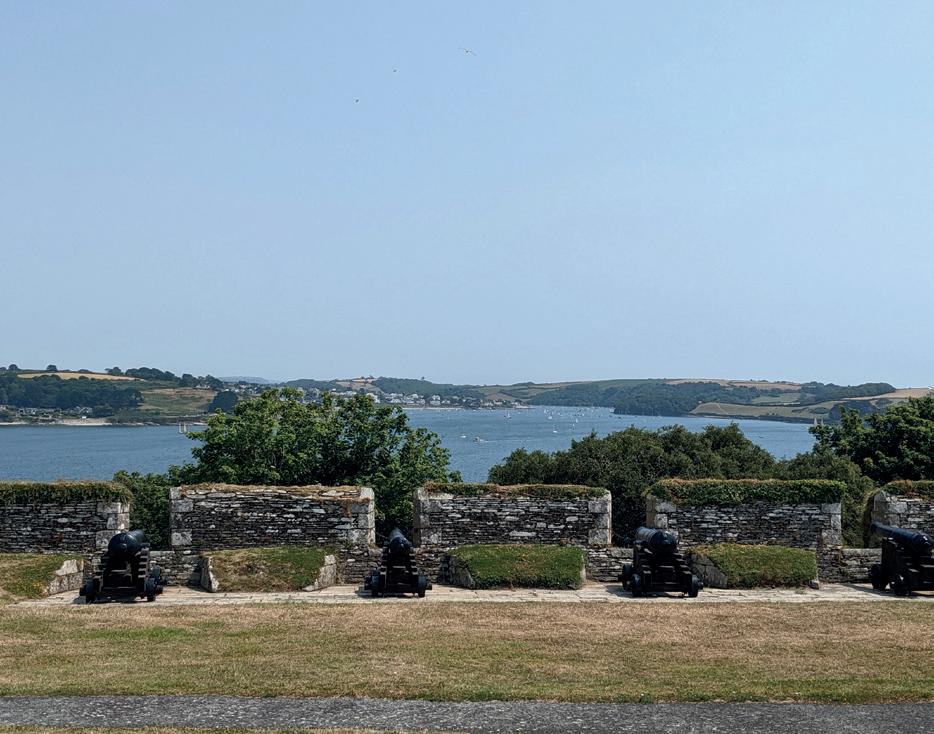
KEEPING YOU CONNECTED
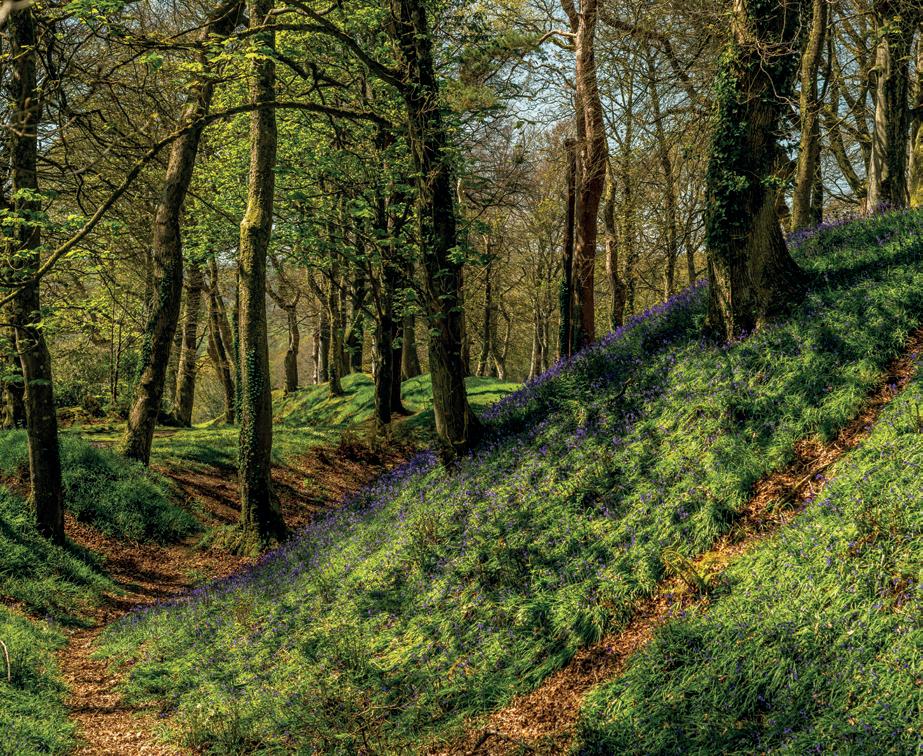
Don’t forget to check out our English Heritage Volunteers’ Facebook group. It’s a great space for you to connect with others. Over four hundred of you have joined and everyone’s welcome to come and be part of the friendly conversation.
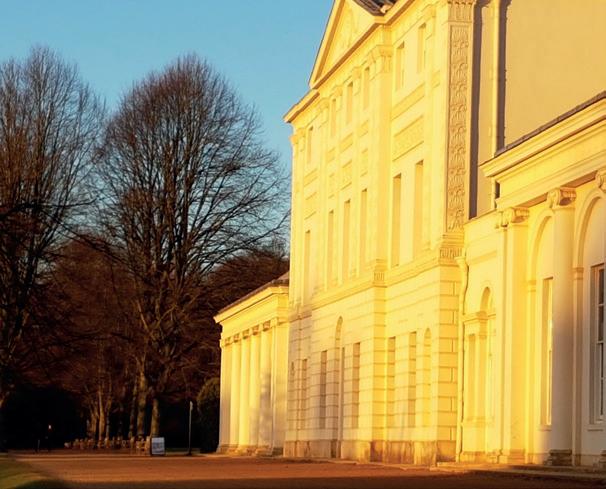
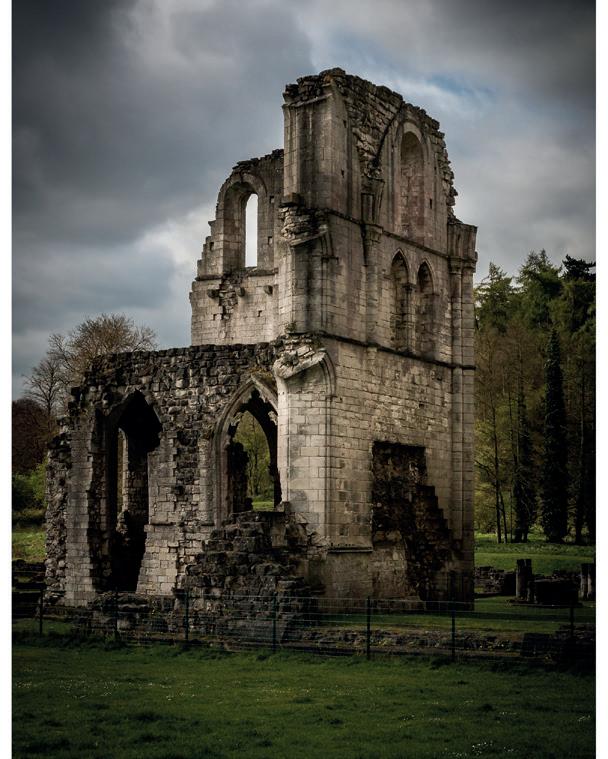
JOIN OUR FACEBOOK GROUP

Log into www.facebook.com, search ‘English Heritage Volunteers’ and click on ‘request’ to join the group.

english-heritage.org.uk 33
Trethevy Quoit by Gavin Parsons
Roche Abbey by Daniel Hines
Roche Abbey by Daniel Hines
Pendennis Castle by Jane Beardsall
Kenwood by Lesley Barnes
Blackbury Camp by Mike Lanning
TEA BREAK CROSSWORD
Ask the curator

Visitor volunteer Gillian Sulley puts a question to building conservation manager Liz Knight
Removing vegetation from ruins is generally considered to be beneficial but is there evidence that removing it can be damaging and leaving it in situ could offer protection?
While it may not appear great on the surface vegetation roots can penetrate walls, leading to water ingress and ultimately undermining the wall. Extensive ivy growth can destabilise masonry and this has to be carefully removed by specialists in order to prevent further damage. In a few instances it may be better to maintain the growth in place ensuring that the additional weight is managed so as not to add excessive load. Research by Historic England found that in some instances, on well-consolidated walls ivy growth can help regulate the temperature of the masonry and prevent excessive wetting and drying cycles reducing freeze/thaw action. Further information can be found on the Historic England website: historicengland.org.uk/research
1 2 3 4 5 6 7 8 11 12 10 9 13 17 14 15 16 20 21 18 19 23 24 26 27 25 22 english-heritage.org.uk 34 OVER TO YOU WE’D LOVE TO HEAR FROM YOU Please send us your letters, photos, puzzles, quizzes, jokes or anything else you’d like to share.
us at
Email
volunteerfocus@english-heritage.org.uk
Do you have a burning historical question you’d love to have answered? Send them in to us and we’ll ask the curator in the next edition. Across 2. A row (4) 4. Large fortified building (6) 8. Pushes gently (6) 9. Painter’s workroom (6) 11 and 21.Visitor attraction (5,5) 12. Vessels (4) 15. Cook food in (4) 16. Not very bright (3) 17. Dread (4) 20. Nil (4) 21. See 11 across 24. Rule (6) 25. Type of dog (6) 26. Forcible restraint (6) 27. Drug addict (4) Answers: Tea break crossword Across 2 Tier; 4 Castle; 8 Nudges; 9 Studio; 11 Stone; 12 Pots; 15 Oven; 16 Dim; 17 Fear; 20 Zero; 21 Henge; 24 Govern; 25 Beagle; 26 Duress; 27 User. Down 1 Kingston; 2 Tadpoles; 3 Eleven; 5 Astute; 6 Tidy; 7 Eton; 10 Epsilon; 13 Teenager ; 14 Freezers; 18 Hearts; 19 Cheers; 22 Aged; 23 Aver. Down 1. A town in England (8) 2. Amphibians, say (8) 3. Number (6) 5. Shrewd (6) 6. Orderly (4) 7. Public school (4) 10. Fifth letter of Greek alphabet (7) 13. Person from 13 to 19 years old (8) 14. They are used to preserve food (8) 18. Card suit
19. Shout applause (6) 22. Old (4) 23. Assert
(6)
(4)
volunteer
us to
Stonehenge
David Tovey has created another crossword for
enjoy. (Answers below)
GIVE OUR HISTORY A FUTURE
LEAVE A LASTING LEGACY
We inherited our incredible story from those who came before us, now it falls to us to protect it. By leaving a gift in your will you can ensure that story can be told forever.
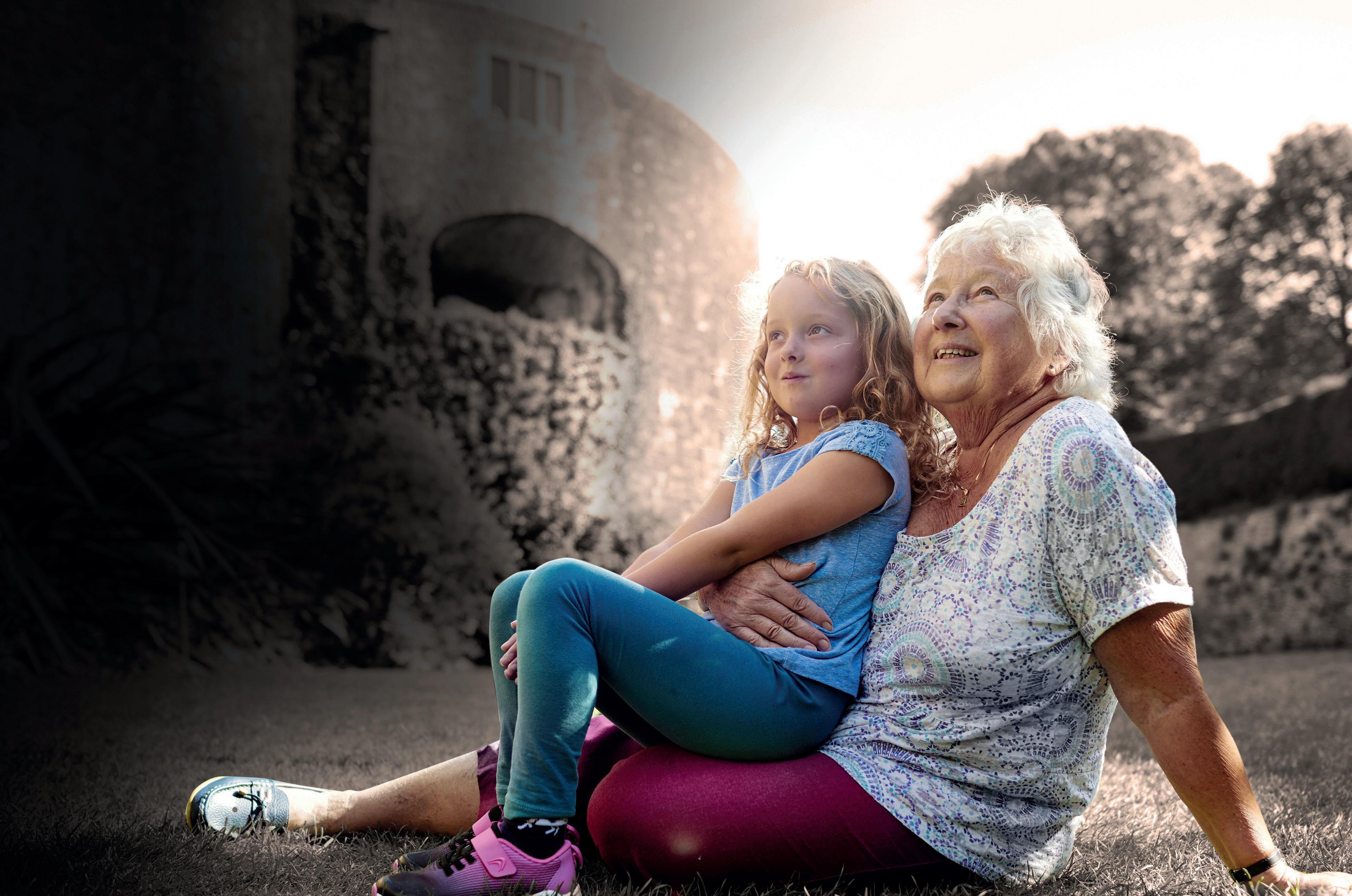
To help you make a difference, we’re offering a free will writing service with makeawillonline.co.uk It’s a straightforward process, and each will is checked by a fully qualified solicitor.
To find out more, visit www.english-heritage.org.uk/legacies
English Heritage Trust is a charity, no. 1140351, and a company, no. 07447221,
YOUR
in
(CM7517_09/22)
THANK YOU FOR
SUPPORT The
registered
England.
This map, and the sites depicted on it, are for illustrative purposes only
In celebration of the 1900th anniversary of the start of the construction of Hadrian’s Wall, we are hosting a series of events and activities at our Roman sites. Illustration volunteer Sam Riley has created this beautiful map to celebrate volunteer support at some of our Roman sites.
Thank you to everyone involved and to Sam.




















 Garden area of Cambridge Lodge at Audley End House and Gardens, Essex | sleeps 4
Garden area of Cambridge Lodge at Audley End House and Gardens, Essex | sleeps 4


















































 Ginny Slade, volunteer manager
Ginny Slade, volunteer manager



























